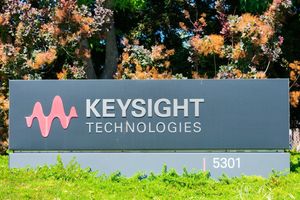
Boston, MA – Circle Internet Group, a leading global financial technology firm and the issuer of the USDC stablecoin, witnessed a remarkable surge in its stock (NYSE: CRCL) during premarket trading, climbing over 12% despite reporting a net loss for the second quarter of 2025. This seemingly paradoxical market reaction underscores investor confidence in the company's robust underlying business, driven by an impressive 53% year-over-year increase in total revenue and reserve income, reaching $658 million. The strong performance, particularly the significant growth in USDC circulation, is sending positive ripples across the stablecoin and broader cryptocurrency markets, validating the stablecoin business model and potentially accelerating institutional adoption.
Circle's Q2 Triumph: Revenue Growth Outshines IPO-Related Loss
Circle Internet Group's Q2 2025 financial results presented a nuanced picture: a net loss of $482 million juxtaposed with a substantial revenue increase. The loss, however, was largely attributed to significant non-cash charges totaling $591 million, primarily stemming from its recent Initial Public Offering (IPO) in June 2025. These charges included $424 million for stock-based compensation related to vesting conditions met by the IPO and a $167 million increase in the fair value of convertible debt due to the rise in Circle's share price. Investors largely looked past these one-time accounting impacts, focusing instead on the company's operational strength.
The driving force behind the market's optimism was the exceptional 53% year-over-year revenue growth to $658 million, which significantly exceeded analyst expectations. This growth is directly linked to the burgeoning circulation of Circle's flagship stablecoin, USDC. The circulation of USDC grew by an impressive 90% year-over-year to $61.3 billion at the end of Q2, further increasing to $65.2 billion by August 10, 2025. Circle generates income from the interest on the U.S. Treasuries backing USDC, making the stablecoin's adoption a direct driver of the company's financial health. Furthermore, Circle's adjusted EBITDA, a key measure of operational profitability, grew 52% year-over-year to $126 million, surpassing analyst estimates and indicating healthy core operations.
The timeline leading up to this moment includes Circle's strategic decision to go public in June 2025, a move that positioned it as a prominent player in the publicly traded crypto space. Key stakeholders involved include Circle's management team, led by CEO Jeremy Allaire, investors who participated in the IPO, and the broader cryptocurrency community that relies on USDC for various transactions. Initial market reactions were overwhelmingly positive, with the stock's premarket surge signaling strong investor confidence in Circle's long-term prospects and the increasing legitimacy of regulated stablecoin issuers. The recent passage of the GENIUS Act in July 2025, providing regulatory clarity for stablecoins in the U.S., has further bolstered Circle's position and investor sentiment.
Navigating the Stablecoin Landscape: Who Wins and Who Faces Challenges
Circle's robust Q2 performance and the subsequent stock surge have clear implications for various players within the financial and cryptocurrency ecosystems. The most apparent winner is Circle Internet Group (NYSE: CRCL) itself, as its strong revenue growth and increasing USDC circulation validate its business model and enhance its market position. This success could lead to further capital infusion, enabling the company to expand its offerings, invest in new technologies like the Arc blockchain, and solidify its leadership in the stablecoin space.
Another significant winner is the broader stablecoin market, particularly those focused on regulatory compliance and transparency. Circle's success demonstrates that a regulated, interest-bearing stablecoin model can be highly profitable and attract significant investor interest. This could encourage other stablecoin issuers, such as Tether (USDT) and Paxos (BUSD), to enhance their transparency, pursue regulatory clarity, and potentially explore similar revenue-generating models from their reserves to remain competitive. Companies building infrastructure around stablecoins, including payment processors and DeFi platforms, also stand to benefit from increased USDC adoption and the overall validation of stablecoin utility.
Conversely, traditional financial institutions that have been slow to embrace digital assets or stablecoins might find themselves at a disadvantage. As Circle demonstrates the efficiency and profitability of stablecoin-based financial services, banks and payment networks that do not adapt could lose market share in cross-border payments, remittances, and institutional finance. While not direct "losers" in the traditional sense, their inaction could lead to missed opportunities. Furthermore, less regulated or less transparent stablecoin projects might face increased scrutiny and competition, potentially losing market share to more established and compliant players like Circle. The emphasis on regulatory clarity, as highlighted by the GENIUS Act, puts pressure on all stablecoin issuers to meet higher standards.
Industry Impact and Broader Implications: A Maturing Digital Asset Ecosystem
Circle's Q2 performance is not merely a company-specific event; it's a significant indicator of the maturing digital asset ecosystem and the increasing integration of cryptocurrencies into mainstream finance. This event fits squarely into the broader trend of institutional adoption of digital assets, particularly stablecoins, which are seen as a less volatile entry point into the crypto market. The substantial revenue generated from USDC reserves underscores the viability of stablecoins as a foundational layer for future financial innovation, from cross-border payments to decentralized finance (DeFi).
The potential ripple effects on competitors and partners are substantial. For competitors like Tether, Circle's success could spur a renewed focus on transparency, audits, and regulatory engagement to maintain their market position. For partners, including major internet companies and financial institutions, Circle's robust performance and regulatory clarity make USDC an even more attractive asset for building new services and integrating digital payments. The announcement of the Circle Payments Network and the upcoming Arc blockchain, an open Layer-1 blockchain purpose-built for stablecoin finance, signals a new wave of infrastructure development aimed at enhancing stablecoin utility and efficiency. This could inspire other stablecoin issuers and blockchain developers to innovate in similar ways, fostering a more robust and interconnected stablecoin ecosystem.
Regulatory and policy implications are also profound. The passage of the GENIUS Act in July 2025, which provides regulatory clarity for stablecoins in the U.S., has been a game-changer. Circle's ability to thrive under this new framework sets a positive precedent for other cryptocurrency companies seeking to go public or operate within established regulatory guidelines. This move towards clearer regulation is crucial for attracting more institutional capital and fostering a more stable and predictable environment for digital asset innovation. Historically, the crypto market has been plagued by regulatory uncertainty, but events like Circle's successful IPO and strong performance under new legislation suggest a shift towards a more mature and regulated industry, drawing parallels to the early days of internet companies seeking regulatory frameworks to scale.
What Comes Next: The Road Ahead for Circle and the Stablecoin Market
Looking ahead, Circle's strong Q2 performance sets the stage for several key developments in both the short and long term. In the short term, the company will likely focus on further expanding the utility and adoption of USDC across various use cases, including cross-border payments, institutional finance, and DeFi. The continued growth of USDC circulation will be paramount for sustaining revenue growth. The rollout and adoption of the Arc blockchain, with USDC as its native gas token, will be a critical strategic pivot, aiming to enhance stablecoin utility and efficiency, potentially attracting more developers and enterprises to build on Circle's infrastructure.
In the long term, Circle is poised to solidify its position as a dominant player in the global stablecoin market. The company's commitment to regulatory compliance, coupled with its innovative product development, positions it well to capitalize on the increasing demand for digital dollars in a tokenized economy. Potential strategic adaptations might include further diversification of its revenue streams beyond interest on reserves, perhaps through new financial services built on its stablecoin rails or through partnerships with traditional financial institutions.
Market opportunities that may emerge include increased collaboration with central banks exploring central bank digital currencies (CBDCs), as Circle's expertise in regulated stablecoins could be invaluable. There's also a significant opportunity in expanding into emerging markets where stablecoins can offer more efficient and accessible financial services. Challenges, however, will persist, including intense competition from other stablecoin issuers, evolving regulatory landscapes globally, and the inherent volatility of the broader cryptocurrency market. Potential scenarios range from continued exponential growth for USDC and Circle, leading to a more integrated digital dollar economy, to increased regulatory scrutiny that could impact operational flexibility. Investors should watch for further announcements regarding Arc blockchain development, new partnerships, and any shifts in global stablecoin regulations.
Conclusion: A New Era for Regulated Digital Assets
Circle Internet Group's Q2 2025 performance marks a pivotal moment for the stablecoin industry and the broader digital asset landscape. The key takeaway is clear: a regulated, transparent, and operationally sound stablecoin business model can generate substantial revenue and attract significant investor confidence, even amidst reported losses driven by non-cash accounting events. The 53% year-over-year revenue gain, fueled by the impressive growth of USDC circulation, underscores the increasing demand for digital dollars and the viability of stablecoins as a foundational element of the future financial system.
Moving forward, the market is likely to witness an acceleration in institutional adoption of stablecoins, driven by the regulatory clarity provided by the GENIUS Act and the proven success of companies like Circle. This will undoubtedly intensify competition among stablecoin issuers, pushing them towards greater transparency and regulatory compliance. Circle's strategic initiatives, particularly the Arc blockchain, signal a commitment to innovation that could reshape how stablecoins are used for payments and financial services globally.
The lasting impact of this event is the further legitimization of the cryptocurrency space, particularly for regulated entities. It provides a blueprint for how digital asset companies can successfully navigate public markets and regulatory frameworks. Investors should closely monitor Circle's continued USDC growth, the development and adoption of its new platforms, and the evolving global regulatory environment for stablecoins. Circle's Q2 results are not just a win for the company; they are a significant step forward for the entire digital asset industry, signaling a new era of maturity and mainstream integration.





